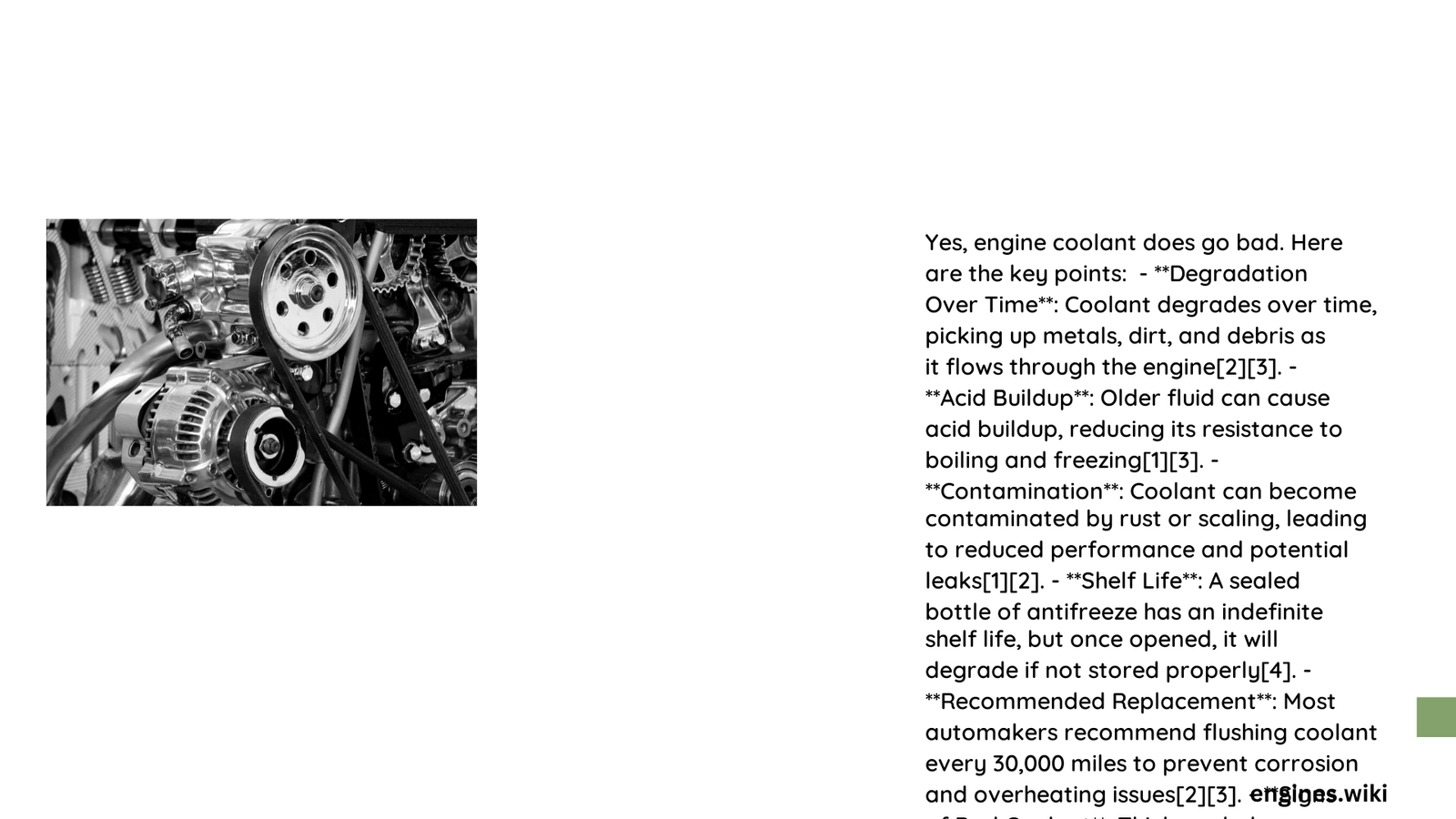Engine coolant is a critical fluid that maintains optimal engine temperature and prevents corrosion, but like all automotive fluids, it can deteriorate over time. Vehicle owners must understand that coolant doesn’t last forever and can lose its effectiveness, potentially leading to significant engine damage if not monitored and replaced regularly. This comprehensive guide will explore the nuanced aspects of coolant degradation, helping you protect your vehicle’s most expensive component.
What Causes Engine Coolant to Degrade?
How Long Does Coolant Actually Last?
Engine coolant’s lifespan depends on multiple factors:
| Coolant Type | Unopened Shelf Life | Recommended Usage Period |
|---|---|---|
| Traditional Coolant | 3-5 years | 2-3 years |
| OAT Coolant | 5-7 years | 5-10 years |
| Hybrid Coolant | 4-6 years | 3-5 years |
Key Degradation Factors
- Environmental Exposure: Heat, humidity, and temperature fluctuations
- Chemical Breakdown: Loss of protective additives
- Contamination: Introduction of external particles
- Vehicle Usage: Extreme driving conditions accelerate coolant deterioration
What Are the Warning Signs of Bad Coolant?
Recognizing coolant degradation is crucial for preventing engine damage. Look for these indicators:
- Color Changes
- Fresh coolant: Bright green, orange, or pink
-
Degraded coolant: Murky, brownish, or rust-colored
-
Physical Characteristics
- Presence of sediment or particles
- Sludge-like consistency
-
Unusual odor
-
Performance Symptoms
- Inconsistent engine temperature
- Frequent overheating
- Visible corrosion in cooling system components
Practical Coolant Maintenance Strategies

When Should You Replace Coolant?
Most automotive experts recommend:
– Standard Vehicles: Replace every 30,000 miles or 3-5 years
– Modern Vehicles: Some can extend to 60,000-100,000 miles
– Manufacturer Recommendations: Always prioritize specific vehicle guidelines
How to Preserve Coolant Quality?
Effective coolant maintenance involves:
– Store unopened coolant in cool, dry environments
– Use distilled water when mixing coolant
– Regularly inspect cooling system components
– Perform periodic coolant system flushes
Potential Consequences of Neglecting Coolant
Failing to address coolant degradation can result in:
– Engine Overheating
– Corrosion of Engine Components
– Potential Complete Engine Failure
– Expensive Repair Costs
Professional Recommendations
- Conduct annual coolant system inspections
- Use high-quality coolant matching manufacturer specifications
- Monitor coolant condition during routine maintenance
- Consider professional coolant system flush every 2-3 years
Conclusion
Understanding whether engine coolant goes bad is crucial for vehicle longevity. Regular monitoring, timely replacement, and adherence to manufacturer guidelines will help maintain your engine’s health and performance.
